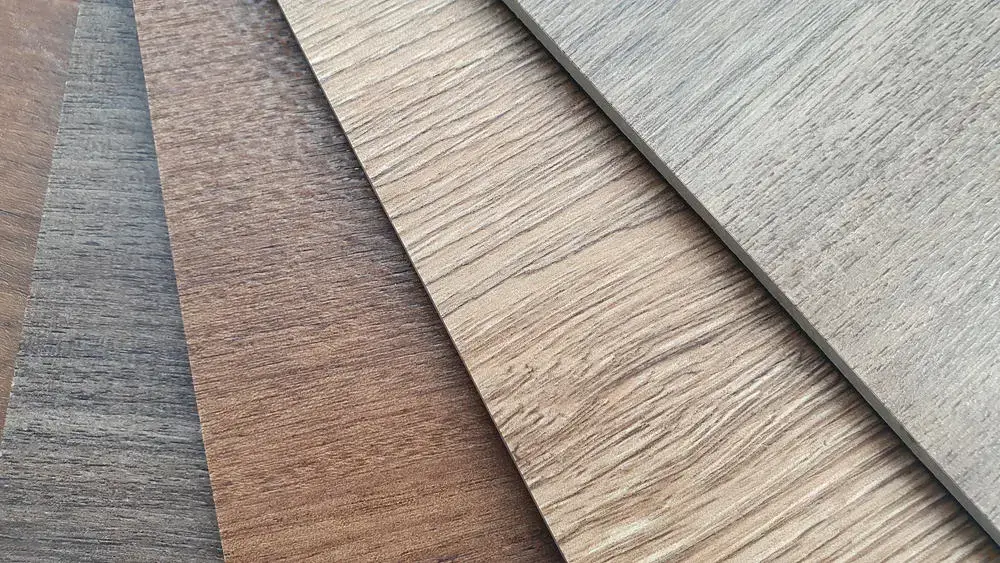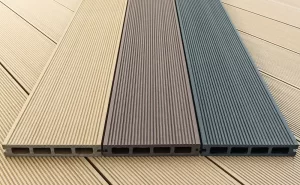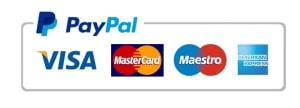WPC (Wood-Plastic Composite) vinyl flooring stands as a testament to the marriage of beauty and durability in the world of interior design. This innovative flooring option combines the natural look and texture of wood with the resilience of modern technology. The result is a floor that not only exudes the warmth and elegance of hardwood but also boasts remarkable longevity. Its unique composition, comprising wood fibers, plastic polymers, and a rigid core, makes it highly resistant to moisture, scratches, and wear, ensuring it can withstand the rigors of daily life in bustling households. Moreover, WPC vinyl flooring comes in an array of stunning designs and finishes, from rich wood grains to sleek contemporary patterns, allowing homeowners to effortlessly transform their spaces into havens of style and resilience. Whether you’re looking to upgrade your home’s aesthetics or seeking a practical flooring solution, WPC vinyl flooring beautifully bridges the gap between form and function. When it comes to choosing flooring for your home or business, you want a combination of elegance, resilience, and easy maintenance. WPC vinyl flooring, a relatively new player in the flooring market, ticks all these boxes and more. In this blog post, we’ll take a closer look at WPC Vinyl Flooring, exploring its unique features, benefits, and why it’s becoming a popular choice among homeowners and designers alike.
What is WPC Vinyl Flooring?
WPC (Wood-Plastic Composite) vinyl flooring is a type of synthetic flooring material that has gained popularity for its unique blend of characteristics. It is designed to mimic the look and feel of hardwood flooring while offering enhanced durability and moisture resistance. WPC vinyl flooring is composed of several layers:
- Wear Layer: The topmost layer of WPC vinyl flooring is a clear wear layer that provides protection against scratches, stains, and UV damage. It keeps the floor looking new and ensures it can withstand daily wear and tear.
- Vinyl Layer: Beneath the wear layer is a vinyl layer that contains the printed design. This layer is responsible for replicating the appearance of wood, stone, or other natural materials. It’s available in a wide range of patterns and colors to suit various interior design preferences.
- WPC Core: The core of WPC vinyl flooring is where it gets its name. It consists of a Wood-Plastic Composite, which typically includes wood fibers or flour mixed with thermoplastic materials like PVC (polyvinyl chloride). This core layer provides structural stability, durability, and resistance to moisture. It also contributes to the flooring’s ability to maintain its shape and integrity even in humid environments.
- Backing Layer: The bottom layer of WPC vinyl flooring is a backing layer that helps with stability and provides additional insulation against moisture and sound.
One of the key advantages of WPC vinyl flooring is its resilience in damp environments, making it suitable for areas like kitchens, bathrooms, and basements where traditional hardwood may not be recommended due to potential moisture-related issues. Additionally, it’s easy to install, often coming in interlocking or click-lock systems, making it a popular choice for DIY home improvement projects. WPC vinyl flooring offers a versatile and aesthetically pleasing flooring option for those seeking a balance between the appearance of natural materials and the practicality of modern technology.
Types of WPC Vinyl Flooring
WPC (Wood-Plastic Composite) vinyl flooring comes in several types and styles, catering to a wide range of preferences and applications. Here are some common types of WPC vinyl flooring:
- Wood Grain WPC Vinyl Flooring: This type closely mimics the look and texture of real hardwood flooring. It comes in various wood species and finishes, including oak, maple, hickory, and more. Wood grain WPC vinyl flooring is popular for its timeless and natural appearance.
- Stone-Embossed WPC Vinyl Flooring: Stone-embossed WPC vinyl flooring replicates the look of natural stone materials like marble, slate, travertine, or concrete. It offers the elegance of stone without the coldness and hardness typically associated with those materials.
- Tile-Look WPC Vinyl Flooring: Tile-look WPC vinyl flooring is designed to imitate ceramic or porcelain tiles. It comes in various tile patterns, including subway, hexagon, and mosaic designs. This type is an excellent choice for those who want the aesthetics of tile without the grout lines.
- Wide-Plank WPC Vinyl Flooring: Wide-plank WPC vinyl flooring features wider and longer boards, creating a more open and spacious look in rooms. It adds a modern touch while maintaining the appeal of natural wood.
- Embossed-in-Register (EIR) WPC Vinyl Flooring: EIR WPC vinyl flooring takes realism to the next level. It replicates the texture and grain of real wood or stone so accurately that you can feel the texture as well as see it, providing a highly authentic appearance.
- Textured or Hand-Scraped WPC Vinyl Flooring: Textured or hand-scraped WPC vinyl has deliberate surface imperfections and textures that mimic the appearance of hand-crafted, distressed, or weathered wood. This adds character and a rustic charm to the flooring.
- Herringbone and Chevron Patterns: Some WPC vinyl flooring options are available in herringbone or chevron patterns, providing a unique and sophisticated look for your floors.
- Waterproof WPC Vinyl Flooring: While most WPC vinyl flooring is already moisture-resistant, some varieties are explicitly marketed as waterproof. These floors have enhanced waterproofing features, making them suitable for areas with high humidity or potential water exposure, such as bathrooms, kitchens, and basements.
- Commercial-Grade WPC Vinyl Flooring: Designed for heavy foot traffic and commercial applications, commercial-grade WPC vinyl flooring is extra durable and wear-resistant. It’s often used in retail stores, offices, and other high-traffic areas.
- Custom-Printed WPC Vinyl Flooring: For a truly unique and personalized touch, some manufacturers offer custom-printed WPC vinyl flooring. You can have your own designs, patterns, or images printed onto the vinyl layer, allowing for limitless creative possibilities.
When choosing the type of WPC vinyl flooring for your space, consider factors such as the room’s purpose, design preferences, and maintenance requirements to make the best selection for your needs.
Advantages of WPC Vinyl Flooring
WPC (Wood-Plastic Composite) vinyl flooring offers numerous advantages that make it a popular choice for homeowners and commercial spaces. Here are some of the key advantages of WPC vinyl flooring:
- Waterproof and Moisture-Resistant: WPC vinyl flooring is highly resistant to water and moisture, making it suitable for areas prone to spills, humidity, and dampness. It can be installed in bathrooms, kitchens, and basements without the risk of warping or damage.
- Durability: WPC vinyl flooring is designed to be incredibly durable and resistant to wear and tear. It can withstand heavy foot traffic and is less prone to scratches and dents than traditional hardwood or laminate flooring.
- Realistic Appearance: WPC vinyl flooring comes in a wide range of realistic designs that mimic the look and texture of natural materials like wood, stone, and tile. Some varieties even feature embossed textures for an authentic feel.
- Comfort Underfoot: The WPC core provides a comfortable and cushioned feel underfoot, making it more comfortable to walk on than harder flooring options like ceramic tile or hardwood.
- Easy Installation: Many WPC vinyl flooring products feature click-lock or interlocking systems, making them easy to install as a DIY project. This can save on installation costs and time.
- Low Maintenance: WPC vinyl flooring is relatively low-maintenance. Regular sweeping and occasional mopping are usually sufficient to keep it clean. It doesn’t require refinishing or sealing like hardwood.
- Sound Absorption: WPC vinyl has some natural sound-absorbing properties due to its layered construction. This can help reduce noise levels in homes and commercial spaces.
- Wide Variety of Styles: WPC vinyl flooring is available in a vast array of styles, colors, patterns, and textures, allowing for creative interior design choices to suit any aesthetic preference.
- Versatility: It can be installed over various existing subfloors, including concrete, plywood, or existing vinyl flooring, which adds to its versatility and ease of installation.
- UV Resistance: The wear layer on WPC vinyl flooring is UV resistant, which means it won’t fade or discolor when exposed to sunlight over time.
- Allergen-Friendly: Unlike some flooring materials, WPC vinyl does not harbor allergens like dust mites or mold, making it a suitable option for allergy sufferers.
- Environmentally Friendly: Some WPC vinyl flooring products are made with recycled materials, and because it lasts a long time and doesn’t require frequent replacement, it can be considered an eco-friendly flooring choice.
Overall, WPC vinyl flooring offers a compelling combination of beauty, durability, and practicality, making it an attractive option for both residential and commercial applications. Its ability to withstand moisture and its versatility in design options make it particularly appealing for modern interior spaces.
Where Can You Use WPC Vinyl Flooring?
WPC (Wood-Plastic Composite) vinyl flooring is a versatile flooring option that can be used in various residential and commercial settings due to its unique combination of durability, moisture resistance, and aesthetic appeal. Here are some common places where you can use WPC vinyl flooring:
- Living Rooms and Bedrooms: WPC vinyl flooring can add warmth and style to living spaces and bedrooms. Its cushioned surface provides comfort underfoot, making it a cozy choice for these areas.
- Kitchens: Given its waterproof properties, WPC vinyl is an excellent choice for kitchens where spills and moisture are common. It can handle daily wear and tear and is easy to clean.
- Bathrooms: WPC vinyl is an ideal choice for bathrooms due to its resistance to moisture. It provides the look of wood or tile without the risk of warping or water damage.
- Basements: Basements are often prone to moisture issues, so WPC vinyl is a popular choice for these spaces. It can be installed directly over concrete subfloors, making it an excellent solution for finishing a basement.
- Entryways and Mudrooms: These high-traffic areas can benefit from the durability of WPC vinyl flooring. It’s easy to clean and can withstand the dirt and moisture that often get tracked in.
- Commercial Spaces: WPC vinyl is used in various commercial settings, such as retail stores, offices, restaurants, and healthcare facilities. Its durability, ease of maintenance, and sound-absorbing qualities make it a practical choice.
- Children’s Playrooms: The cushioned surface of WPC vinyl makes it an ideal choice for playrooms, providing a comfortable and safe space for children to play.
- Pet-Friendly Spaces: WPC vinyl is resistant to scratches and stains, making it a pet-friendly flooring option. It can withstand the wear and tear caused by pets’ claws and accidents.
- High-Traffic Areas: Areas with heavy foot traffic, such as hallways and corridors, benefit from the durability of WPC vinyl. It maintains its appearance even in areas prone to wear and tear.
- Commercial Kitchens: Some commercial-grade WPC vinyl flooring options are designed specifically for commercial kitchens, where moisture resistance and ease of cleaning are crucial.
- Fitness Centers and Gyms: WPC vinyl flooring can be used in fitness facilities due to its shock-absorbing qualities and resistance to heavy exercise equipment.
- Restaurants and Cafes: In foodservice establishments, WPC vinyl can provide an attractive and low-maintenance flooring solution. It’s also easy to clean, which is essential in these environments.
It’s important to note that while WPC vinyl flooring is suitable for a wide range of environments, specific product features and installation methods may vary. Always consult with the manufacturer’s guidelines and consider factors like subfloor preparation, acclimatization, and maintenance for the best performance of your WPC vinyl flooring in a given space.
Conclusion
In conclusion, WPC (Wood-Plastic Composite) vinyl flooring has emerged as a remarkable flooring choice that beautifully marries aesthetics with practicality. Its waterproof and moisture-resistant properties make it a versatile option for a multitude of spaces, from the cozy confines of living rooms and bedrooms to the high-traffic hustle and bustle of commercial settings. With its durability, realistic appearance, and ease of maintenance, WPC vinyl flooring offers a compelling solution for those seeking a flooring material that can withstand the rigors of daily life while providing the elegance of natural materials like wood and stone. Whether you’re looking to renovate your home, create a pet-friendly environment, or enhance a commercial space, WPC vinyl flooring stands as a testament to innovation in the world of flooring, promising beauty and longevity for years to come.
Moreover, outdoor WPC flooring comes in an array of styles, colors, and textures, allowing for versatile design options that suit your aesthetic preferences. Whether you’re creating a welcoming deck, a stylish patio, or a relaxing poolside area, WPC flooring offers the perfect blend of form and function. It’s an eco-friendly choice, often incorporating recycled materials, contributing to sustainable living. In summary, outdoor WPC flooring is a game-changer for outdoor spaces, providing beauty, resilience, and ease of use in one impressive package.





